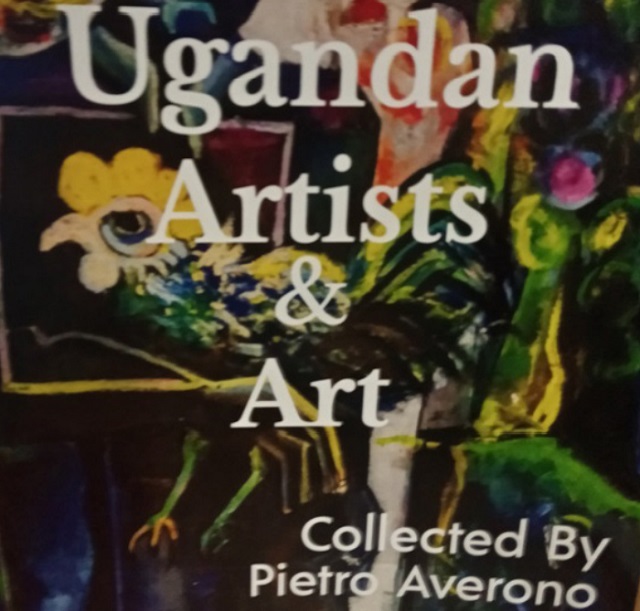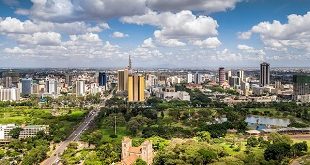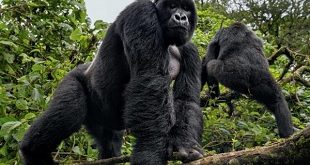
Art Book reveals Uganda’s cultural diversity through collected works by seasoned art collector
Kampala, Uganda | DOMINIC MUWANGUZI | Who’s collecting art in Uganda? This question that is recurrent at many art events across the country is answered with the book: Uganda Artists and Art which is on the market now. The book documents the private collection of a seasoned Italian art collector, Pietro Averono that can be described as extraordinarily exciting and captivating because of its diversity. In this, the Italian collector, formerly a cultural attaché at the Italian Embassy in Kampala, showcases art he acquired in the in the early 1990s when artists started to return home from exile after the present government had captured power, to the beginning of the new millennium, until the present day.
This thoughtful collection of paintings, sculptures and ceramics is mirrored through the nuance each artwork offers. Therefore, the paintings by senior artists like Fabian Mpagi, Francis Musango (gwatamu), Romano Lutwama and Geoffrey Mukasa, reflect the serene mood and temperament of the country in the period between 1980- 1995; that was only interrupted by the guerrilla war. Here, the works of the artists like Geoffrey Mukasa and Fabian Mpagi, are washed in a bright palette of yellows, greens, reds and ocean blue, to suggest the nature of vegetation that covered the country, particularly central Uganda where the two respective artists originated. The colour scheme, also suggest a more intangible aspect of Ugandan society at the time: an optimism for a bright future where the economic fortunes for everyone would be realized! Incidentally, this quality in the art is the reason why Averono started to buy art. In the contemporary times, the collector seems to be influenced to purchase art because of the vitality of the youthful artists and their ingenuity to respond to issues at hand. His collection of youthful artists like Ibrahim Kitimbo, Adrian Miggade, Jjuuko Hoods and Mathias Tusime, is a testimony to this perception.
The structure of the book is strikingly interesting. The cover is adorned with Geoffrey Mukasa untitled painting of a human figure embracing a hen in his crossed hands with the artist’s signature palette of immense greens, yellows and blues in both the middle and background. Mukasa is undoubtedly one of Averono’s favourite artists and this is easily understood by the large volume of work he has collected of the artist. The first few pages of the book carry newspaper cuttings of articles in local dailies documenting the different art exhibitions across town that were sponsored by the Italian Embassy. There are also photographs of respective artists hanging out with the art collector on the sidelines of the opening evenings of the exhibitions. Flipping through the pages, you will encounter the introduction to the book by the collector himself. The introduction starts by definition what art is. According to the artist, he gives the definition as “Art is something that gives you a positive emotion”. He goes on to narrate how he found the passion to collect art from Ugandan artists and how this has conspired to his understanding the country better, plus its people.
The heart of the book is where the different images of collected artists appear alongside their biographies. Each respective biography gives vital information on the artist ranging from when and where they were born, school of art training, discipline of specialty, nature of palette, inspiration to create art and themes often explored through the artwork. This format is essential in exposing the artist(s) to a new audience and also for purpose of research on respective names of artists. In this context of research, information on senior artists like Fabian Mpagi, Romano Lutwama, Geoffrey Mukasa, Francis Musango and Joseph Ntensibe- all names collected by the artist- is vital to the young generation of artists and also students who intend to pursue research on Ugandan modernist art. At the end of the book, there is a full list of Ugandan artists sourced from the Uganda Visual Arts and Designers Association (UVADA) Data base. The list also includes the particular art spaces these artists are attached to. This inclusion of such important information, gives validity and objectivity to this cultural project.
In putting together this book, it can only be hoped that it will inspire the new crop of art collectors in Uganda. It is important to look at the art of art collection beyond the scheme of investment but align it with the idea of cultural development and conservation. This is what makes Averono’s collection extraordinary because it promotes the idea of cultural conservation; carefully purchasing art that reveals Uganda’s social and cultural past and present.
****
Pietro Averono came to Uganda in 1980 has valuable and enviable information on Uganda’s social and cultural landscape evident in his many collections including stamps, currencies and photographs ( old buildings)
 The Independent Uganda: You get the Truth we Pay the Price
The Independent Uganda: You get the Truth we Pay the Price




Hei Where can I find this book Please.
You can get a copy through me. Contact me on my WhatsApp number 0705183996